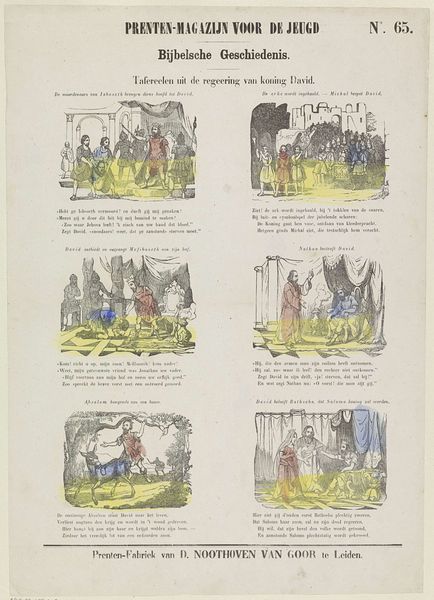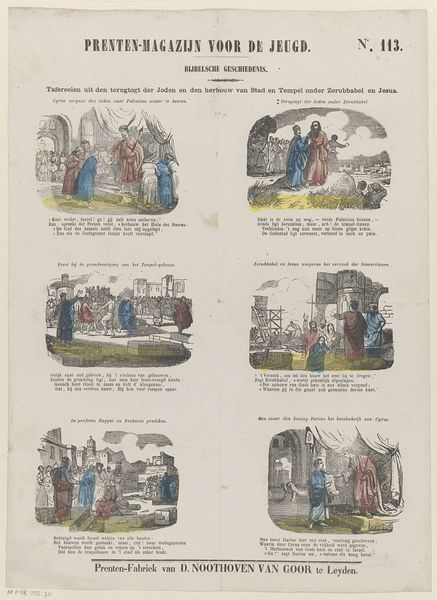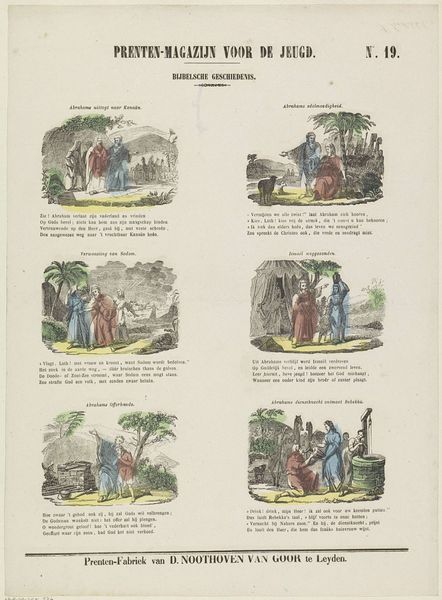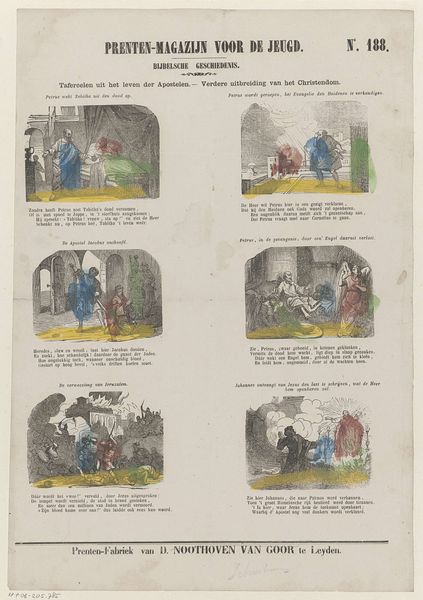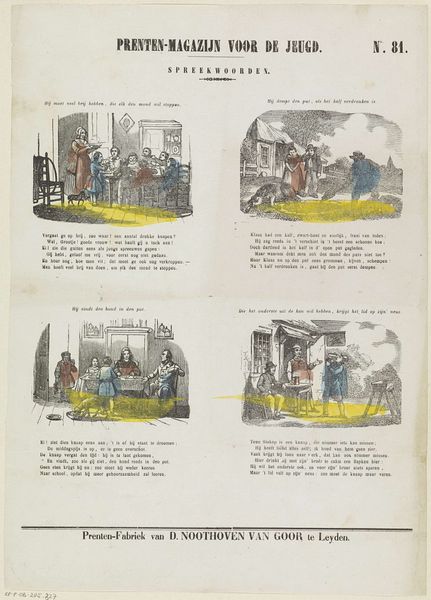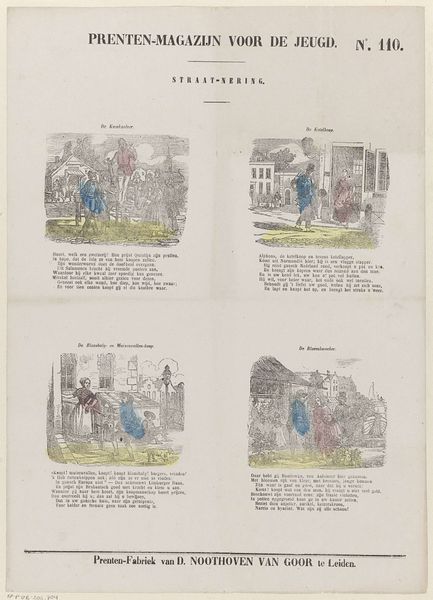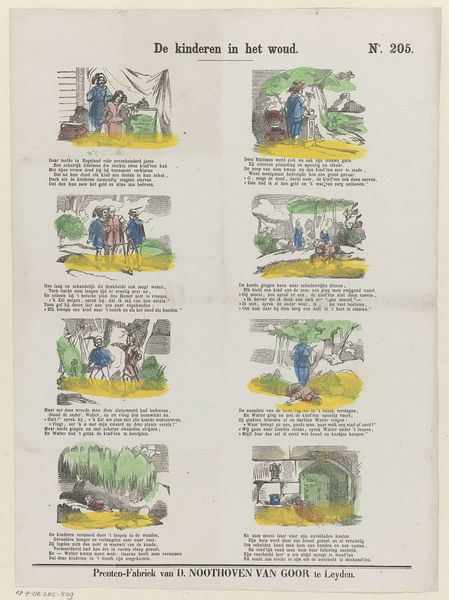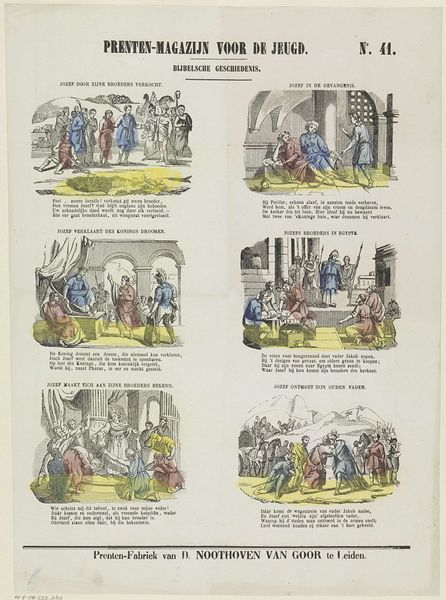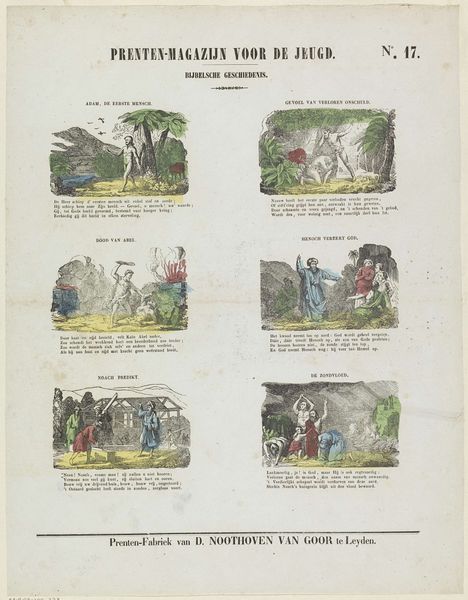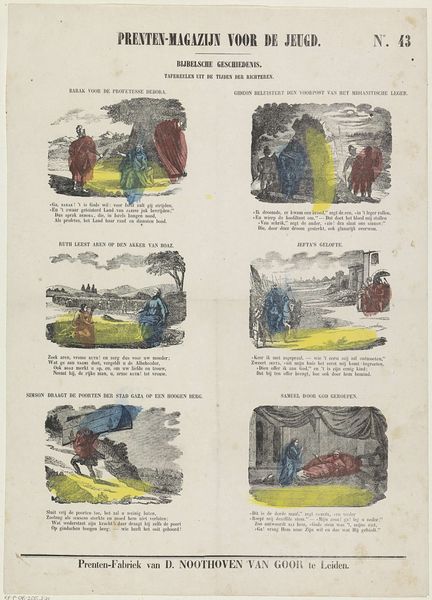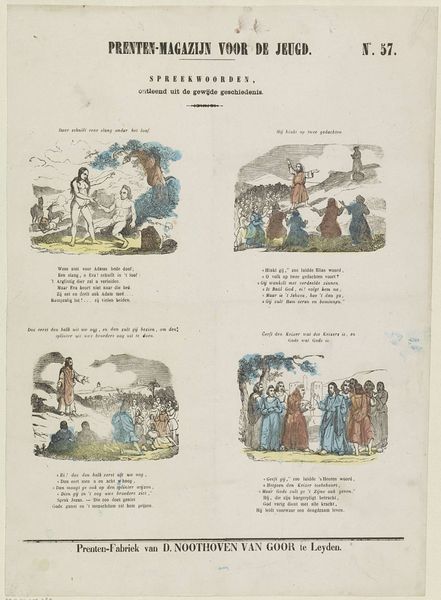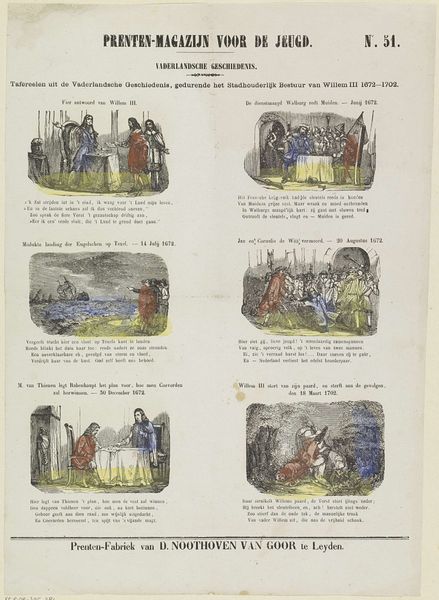
Dimensions: height 421 mm, width 310 mm
Copyright: Rijks Museum: Open Domain
Curator: This graphic print by Dirk Noothoven van Goor, created between 1850 and 1881, is titled "Scenes from the Old Testament." Editor: It strikes me as quaint, almost like a series of vignettes plucked from a storybook, doesn't it? A little naive, perhaps. Curator: I agree that the romanticised style adds to that feeling. Each image offers a perspective on gender roles, faith and family dynamics from a particularly interesting historical context. For example, what implications do we draw from the rendering of the woman in the 'Verwoesting van Sodom' vignette, when viewed from a feminist lens? How does that narrative echo patriarchal power structures and biases within 19th-century religious teachings? Editor: The recurring image of a journey is strong here. Each scene involves figures moving from one place to another, or making offerings – tangible signs of a deeper spiritual path, literally. Note the gestures they make; pointing, reaching out, kneeling. Are they symbols for prayer, supplication, or acceptance? Curator: Certainly, the gestures serve as visual cues that were easily accessible, but they also work to uphold and reinforce the power dynamics of the time. What values and ideas does it impart on gender and race that perhaps reflect a more outdated standard than we may recognize today? Editor: Perhaps the somewhat washed-out coloring plays into this: making it seem a little distant, both in time and emotionally. Still, I can’t help but wonder about the meanings layered within the landscape itself. Each scene has some natural elements: a tree, some distant hills, or water; these details ground these scenes. Do these elements play a role? Curator: Good point. Even those 'neutral' landscape settings, how do we reckon with these settings as representations of control? Or the use of color as it pertains to notions of race during this historical period? What’s not being said is sometimes more crucial than what’s represented literally. Editor: It certainly gives me a lot to contemplate beyond simply the narrative depiction. The images draw from deep wells of archetypes – journeys, punishments, rewards. It triggers something visceral. Curator: It's through analyzing all the visual elements within their social frameworks that can open these 19th-century artworks to a contemporary re-reading and understanding. Editor: Indeed, analyzing art from all sides is essential!
Comments
No comments
Be the first to comment and join the conversation on the ultimate creative platform.
